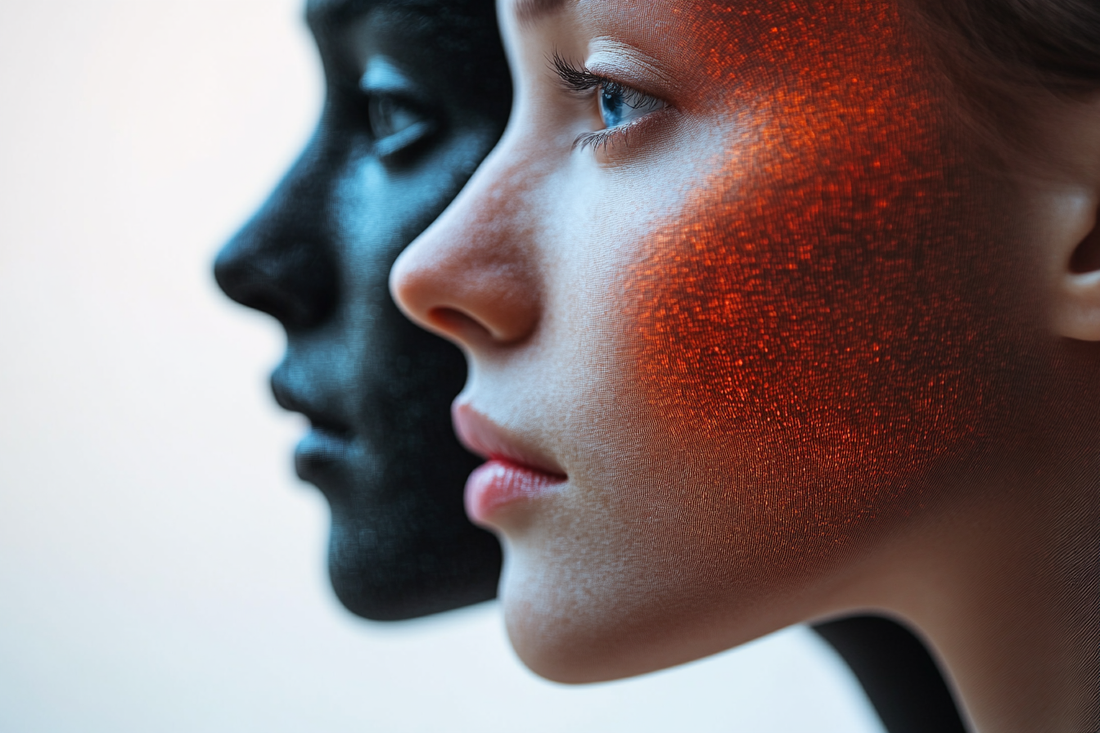
Face Swap AI vs. Deepfake AI: What’s the Difference?
Share
Face swapping is a digital method that replaces one face with another. It uses advanced algorithms that have been trained on large amounts of data sets to recognize a face and map it via main feature points (nose, mouth, eyes...). Retaining the original facial movements and expressions, lighting, poses, skin tones, and other features, face swap technology is applied to videos and images, as well as animated images (GIFs).
Distinctive Features of Face Swap AI Tech
• Techniques: Machine learning algorithms are typically employed for the face-swapping action, i.e. encoders and decoders. These two groups of algorithms are responsible for extracting the original face and fitting the user's choice of face to perfect blending. Encoders analyze the face on source data and target face, while decoders reconstruct the selected face according to the desired appearance.
• Simplicity and Efficiency: Platforms with built-in AI Face Swap technology are usually designed to be clear and easy to use. All that is required is to collect face samples which are then uploaded, while the software automatically detects the face. Sometimes it is necessary to simply mark the targeted area for processing.
• Various Media Support: Face swapping can be applied on static media as well as on dynamic media.
• Software Utilization: Many apps like Snapchat or Instagram filters have integrated algorithms for face swap and are adjusted to give quick results.
• Application: This technology has taken root mostly in the field of entertainment and social networking, as well as marketing. It is used for comic media, personalized marketing material or to add some effects to videos.
Deepfakes – Face Swapping but Stronger
Deepfakes are far more advanced than face swaps. it's based on deep learning algorithms that form neural networks to give the most realistic outcome of the processing. It works by overlaying one individual's face onto another so that it is almost indistinguishable from reality creating highly convincing synthetic visuals. If you want to manipulate facial movements, expressions of mood, and movements of certain parts of the face, then consult deepfake technology.
Distinctive Features of Deepfakes
• Techniques: The deepfake technique uses GANs or Adversarial Neural Networks as the engine. They consist of two neural networks that work together: a generator and a discriminator. While the generator produces deepfakes, i.e. synthetic media, the discriminator then evaluates the level of realism. These operations are repeated until a life-like level of believability is reached.
• Complexity and Hyper-Realism: Deepfake technology is purposefully designed to provide super imposing realistic alternated visual data. The perfection of work on videos and pictures alike creates a perfect illusion that does not fall out from reality, not a pixel. The ability to manipulate movements and angles is not even close to the face swap method.
• Video-Oriented Technique: Artificial intelligence in the field of producing deepfake visuals is unmatched in video content. Namely, this technology does not stop only at face swapping, but also allows the manipulation of voice, gestures, and movement, so it has an incomparably wide application.
• Application: Deepfake technology is very suitable for filmmaking, marketing, and creating highly personalized video content.
• Ethical Issues: Due to its exceptional power of manipulation, deepfake technology is unfortunately used for negative purposes. A lot of misinformation is spreading as we speak and a lot of privacy violations have been caused. Recently, fake news and malicious media have been noticed as severe cases of misuse. Authenticity is seriously compromised by the negative manipulation of deepfakes.
Clash of the Titans: Key Divergencies
1. Technical Complexity
-
Face Swap AI: This technology is usually much simpler and less realistic. It is not focused on details and above-average uniformity but solely focuses on basic face replacement
-
Deepfake AI: Driven by sophisticated models, this technology can provide performance that goes beyond face swaps. The results convincingly touch the border with reality which makes it unsurpassed at the moment.
2. Techniques
-
Face Swap AI: it uses machine learning algorithms, encoders, and decoders to perform facial blending.
-
Deepfake AI: It uses deep learning GANs to make perfectly believable synthetic media.
3. Use Cases
-
Face Swap AI: It’s most commonly used for social media, creative projects, and entertainment.
-
Deepfake AI: It has a wider application in content creation, especially video material with extensive control over scenes, movements, angles, etc.
4. Ethical Problems
-
Face Swap AI: While it can pose as potentially misleading, it’s less believable and perceived as humorous. Therefore, it’s less harmful.
-
Deepfake AI: Causes many dilemmas and misinformation due to its hyperrealistic performance hard to set apart from reality.
Final conclusion
After all that has been said, we can draw the conclusion that we are dealing with two very potent editing techniques that use AI. However, they do not both have the same range and credibility, which is why each has its own domain of application. Both brainchilds of artificial intelligence serve to manipulate the visual appearance of the media, but the differences between them are significant.
While Face Swap AI has become the number one tool for having fun in modifying images and videos so that it has found itself in various forms of entertainment and creating funny material, Deepfake AI is still a much more serious method. The existence and prevalence of deepfakes warn of a more serious approach and more considerate use. Now that we've resolved the dilemmas, what's your verdict?


